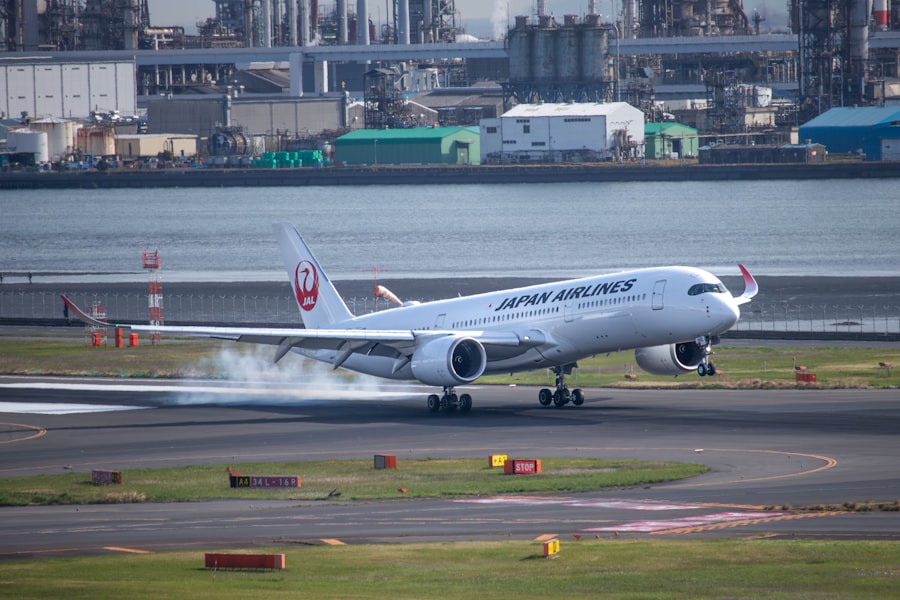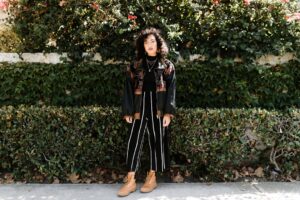5 Exciting Fashion Show Themes to Wow the Runway
Fashion trends are known to be cyclical, with styles from previous decades often resurfacing in contemporary designs. The retro revival trend has gained significant popularity in recent years, with designers and fashion enthusiasts drawing inspiration from past decades. This trend encompasses styles from various eras, including 1970s bohemian and 1990s grunge aesthetics, which are being reinterpreted with modern elements.
The influence of retro fashion is evident in high-end fashion shows, where designers incorporate vintage-inspired elements into their collections. The retro revival extends beyond clothing to include accessories and hairstyles. Vintage-inspired handbags, statement jewelry, and retro sunglasses have become popular among fashion-conscious individuals.
Hairstyles from different decades, such as 1940s victory rolls and 1980s voluminous curls, have also experienced a resurgence. The appeal of retro fashion lies in its ability to evoke nostalgia while allowing for personal expression through the combination of vintage and contemporary pieces. The popularity of vintage and thrift shopping has contributed to the retro revival trend.
Many consumers are turning to secondhand stores and online marketplaces to find unique vintage items. This shift aligns with the growing interest in sustainable and ethical fashion practices, as consumers seek durable, timeless pieces. The retro revival trend demonstrates the enduring nature of fashion and the potential for past styles to be reimagined and appreciated in the present day.
Key Takeaways
- Retro Revival: Fashion trends from the past are making a comeback, taking us on a nostalgic trip down memory lane.
- Future Forward: Fashion and technology are merging to create cutting-edge designs and innovative concepts.
- Global Glamour: Cultural diversity takes center stage on the catwalk, celebrating fashion from around the world.
- Eco-Chic: Sustainable fashion is becoming increasingly important, with a focus on environmental impact and ethical production.
- Fantasy Frenzy: Runway shows are unleashing imagination and creativity, pushing the boundaries of traditional fashion.
Future Forward: Exploring Cutting-Edge Fashion and Technology
As technology continues to advance at a rapid pace, the fashion industry has been at the forefront of exploring the intersection between fashion and technology. From 3D printing to wearable tech, designers have been pushing the boundaries of traditional fashion to create cutting-edge designs that are both innovative and functional. One of the most exciting developments in fashion technology is the use of 3D printing to create intricate and avant-garde garments that were previously impossible to produce using traditional methods.
Designers have been experimenting with 3D printed fabrics, accessories, and even shoes, showcasing the endless possibilities that this technology offers. In addition to 3D printing, wearable technology has also been making waves in the fashion industry. From smart fabrics that can change color or texture on command to garments embedded with sensors that track biometric data, designers have been incorporating technology into clothing in ways that are both practical and stylish.
These advancements in fashion technology have not only revolutionized the way garments are designed and produced but have also opened up new avenues for self-expression and creativity. The marriage of fashion and technology has given rise to a new wave of futuristic designs that blur the lines between art, science, and fashion. Furthermore, the integration of technology into fashion has also had a significant impact on sustainability and ethical practices within the industry.
Designers are increasingly using technology to create eco-friendly materials and production methods, reducing waste and minimizing the environmental impact of fashion. As technology continues to evolve, it is clear that the future of fashion will be shaped by innovation and creativity, as designers continue to push the boundaries of what is possible in the world of fashion.
Global Glamour: Celebrating Cultural Diversity on the Catwalk

The fashion industry has long been criticized for its lack of diversity and representation, but in recent years, there has been a shift towards celebrating cultural diversity on the catwalk. Designers are increasingly drawing inspiration from a wide range of global cultures, incorporating traditional elements and motifs into their collections. This celebration of cultural diversity has not only brought a new level of richness and depth to fashion but has also opened up opportunities for underrepresented communities to have their voices heard and their stories told through clothing.
From African prints to Japanese kimono-inspired silhouettes, designers have been embracing cultural diversity in their designs, showcasing the beauty and craftsmanship of traditional garments from around the world. This celebration of global glamour has not only enriched the fashion landscape but has also sparked important conversations about cultural appropriation and the importance of giving credit to the origins of these designs. In addition, the inclusion of models from diverse backgrounds on the runway has helped to challenge traditional beauty standards and promote a more inclusive vision of beauty within the industry.
The celebration of cultural diversity on the catwalk has also had a ripple effect on consumer behavior, with many individuals seeking out brands that prioritize diversity and inclusion. This shift towards embracing cultural diversity in fashion has not only opened up new opportunities for designers from diverse backgrounds but has also enriched the creative landscape of the industry as a whole. As fashion continues to evolve, it is clear that celebrating cultural diversity will remain a driving force in shaping the future of the industry.
Eco-Chic: Sustainable Fashion and the Environment
| Metrics | Data |
|---|---|
| Carbon footprint reduction | 30% decrease in CO2 emissions |
| Water conservation | 50% reduction in water usage |
| Recycled materials | 70% of materials sourced from recycled sources |
| Renewable energy | 100% of energy used comes from renewable sources |
In recent years, there has been a growing awareness of the environmental impact of the fashion industry, leading to a surge in demand for sustainable and eco-friendly fashion options. Designers and brands have been responding to this demand by incorporating sustainable practices into their production processes, using eco-friendly materials, and prioritizing ethical labor practices. This shift towards eco-chic fashion has not only raised awareness about environmental issues within the industry but has also sparked important conversations about consumer behavior and the need for more responsible consumption.
One of the key pillars of eco-chic fashion is the use of sustainable materials such as organic cotton, hemp, bamboo, and recycled fabrics. These materials not only have a lower environmental impact but also promote ethical farming practices and reduce the use of harmful chemicals in production. In addition, many designers have been embracing upcycling and repurposing old garments to create new, one-of-a-kind pieces that minimize waste and promote circularity within the fashion industry.
This focus on sustainability has not only led to more environmentally friendly collections but has also inspired consumers to rethink their shopping habits and prioritize quality over quantity. Furthermore, the rise of eco-chic fashion has also led to an increased emphasis on transparency and accountability within the industry. Many brands are now providing detailed information about their supply chain, production processes, and environmental impact, allowing consumers to make more informed choices about the brands they support.
This push for transparency has not only empowered consumers to demand more from brands but has also encouraged greater collaboration between designers, manufacturers, and consumers to create a more sustainable future for fashion. As eco-chic fashion continues to gain momentum, it is clear that sustainability will remain a driving force in shaping the future of the industry.
Fantasy Frenzy: Unleashing Imagination and Creativity on the Runway
Fashion has always been a platform for creativity and self-expression, but in recent years, designers have been unleashing their imagination by creating fantastical and otherworldly designs that push the boundaries of traditional fashion. From whimsical couture gowns to avant-garde streetwear, the runway has become a stage for designers to showcase their wildest fantasies and transport audiences into a world of magic and wonder. This trend towards fantasy frenzy has not only captivated audiences but has also inspired a new wave of creativity within the industry.
One of the most exciting aspects of fantasy frenzy in fashion is the use of unconventional materials and techniques to create otherworldly designs that defy traditional norms. Designers have been experimenting with 3D embellishments, holographic fabrics, LED lights, and even augmented reality to bring their fantastical visions to life on the runway. This fusion of technology and creativity has given rise to a new wave of fashion that blurs the lines between reality and fantasy, challenging conventional notions of what clothing can be.
In addition to pushing boundaries with materials and techniques, designers have also been drawing inspiration from mythology, folklore, and science fiction to create collections that transport audiences into imaginary worlds. From ethereal nymph-inspired dresses to futuristic space-age suits, these fantastical designs not only showcase the boundless imagination of designers but also provide an escape from reality for audiences seeking a sense of wonder and awe. As fantasy frenzy continues to captivate audiences around the world, it is clear that imagination will remain a driving force in shaping the future of fashion.
Artistic Expression: Incorporating Fine Art and Design into Fashion Shows

The intersection between art and fashion has long been a source of inspiration for designers, but in recent years, there has been a renewed focus on incorporating fine art and design into fashion shows. From collaborations with renowned artists to runway presentations inspired by iconic works of art, designers have been blurring the lines between fashion and art to create visually stunning collections that transcend traditional notions of clothing. This trend towards artistic expression in fashion not only showcases the creative talents of designers but also elevates fashion to an art form in its own right.
One of the most exciting aspects of artistic expression in fashion is the use of prints and patterns inspired by famous works of art. Designers have been drawing inspiration from paintings, sculptures, and even architecture to create unique textiles that pay homage to iconic artistic movements such as impressionism, cubism, and surrealism. These artistic prints not only add depth and storytelling to collections but also provide a platform for designers to showcase their appreciation for art history and culture.
Furthermore, many designers have been collaborating with artists from various disciplines to create one-of-a-kind pieces that blur the boundaries between fashion and fine art. From hand-painted garments to sculptural accessories, these collaborations not only showcase the talents of both artists and designers but also provide audiences with an immersive experience that goes beyond traditional runway presentations. As artistic expression continues to shape the future of fashion, it is clear that creativity will remain at the heart of this dynamic intersection between art and design.
Vintage Vibes: Showcasing Timeless Fashion Trends from the Past
The allure of vintage fashion has always held a special place in the hearts of fashion enthusiasts, but in recent years, there has been a resurgence of vintage vibes on the runway. Designers have been drawing inspiration from iconic fashion trends from decades past, reimagining them for modern audiences while paying homage to timeless style icons. From 1920s flapper dresses to 70s bohemian chic, these vintage vibes not only evoke feelings of nostalgia but also celebrate the enduring appeal of classic silhouettes and designs.
One of the most exciting aspects of vintage vibes in fashion is the reinterpretation of iconic styles through a contemporary lens. Designers have been putting a modern twist on vintage silhouettes by incorporating current trends and innovative details that breathe new life into classic designs. This fusion of old and new not only showcases the timelessness of vintage fashion but also provides audiences with fresh perspectives on iconic looks from the past.
In addition to reinterpreting vintage silhouettes, designers have also been embracing retro-inspired fabrics and prints that harken back to bygone eras. From bold floral prints reminiscent of 60s mod style to luxurious velvet fabrics evocative of 70s glamour, these vintage-inspired elements add depth and character to modern collections while paying homage to classic textile traditions. As vintage vibes continue to captivate audiences around the world, it is clear that timeless fashion trends from the past will remain an enduring source of inspiration for designers seeking to celebrate the rich history of style.
If you’re looking for some inspiration for fashion show themes, check out this article on Pawmaze for some unique and creative ideas. Whether you’re planning a runway show for a new collection or a charity event, this article has plenty of themes to choose from that will make your fashion show stand out. From vintage glamour to futuristic designs, there’s something for every fashion enthusiast to love.
FAQs
What are fashion show themes?
Fashion show themes are specific concepts or ideas that serve as the inspiration for a fashion show. They help to create a cohesive and visually appealing presentation of the clothing and accessories being showcased.
Why are fashion show themes important?
Fashion show themes are important because they help to create a cohesive and memorable experience for the audience. They also provide a framework for designers to showcase their collections in a way that aligns with a specific concept or idea.
How are fashion show themes chosen?
Fashion show themes are chosen based on a variety of factors, including current trends, cultural influences, historical references, and the overall vision of the designer or fashion brand. They can also be influenced by the season, location, or specific message the designer wants to convey.
What are some popular fashion show themes?
Popular fashion show themes can range from historical eras (such as the 1920s or 1970s), cultural influences (such as Japanese or African-inspired themes), nature and environmental themes, futuristic or sci-fi themes, and many more. The possibilities are endless and can be tailored to fit the vision of the designer.
How do fashion show themes impact the overall presentation?
Fashion show themes impact the overall presentation by setting the tone and mood for the event. They help to create a cohesive visual experience that ties together the clothing, accessories, music, set design, and overall atmosphere of the show. This can leave a lasting impression on the audience and help to communicate the designer’s vision.














Post Comment
You must be logged in to post a comment.